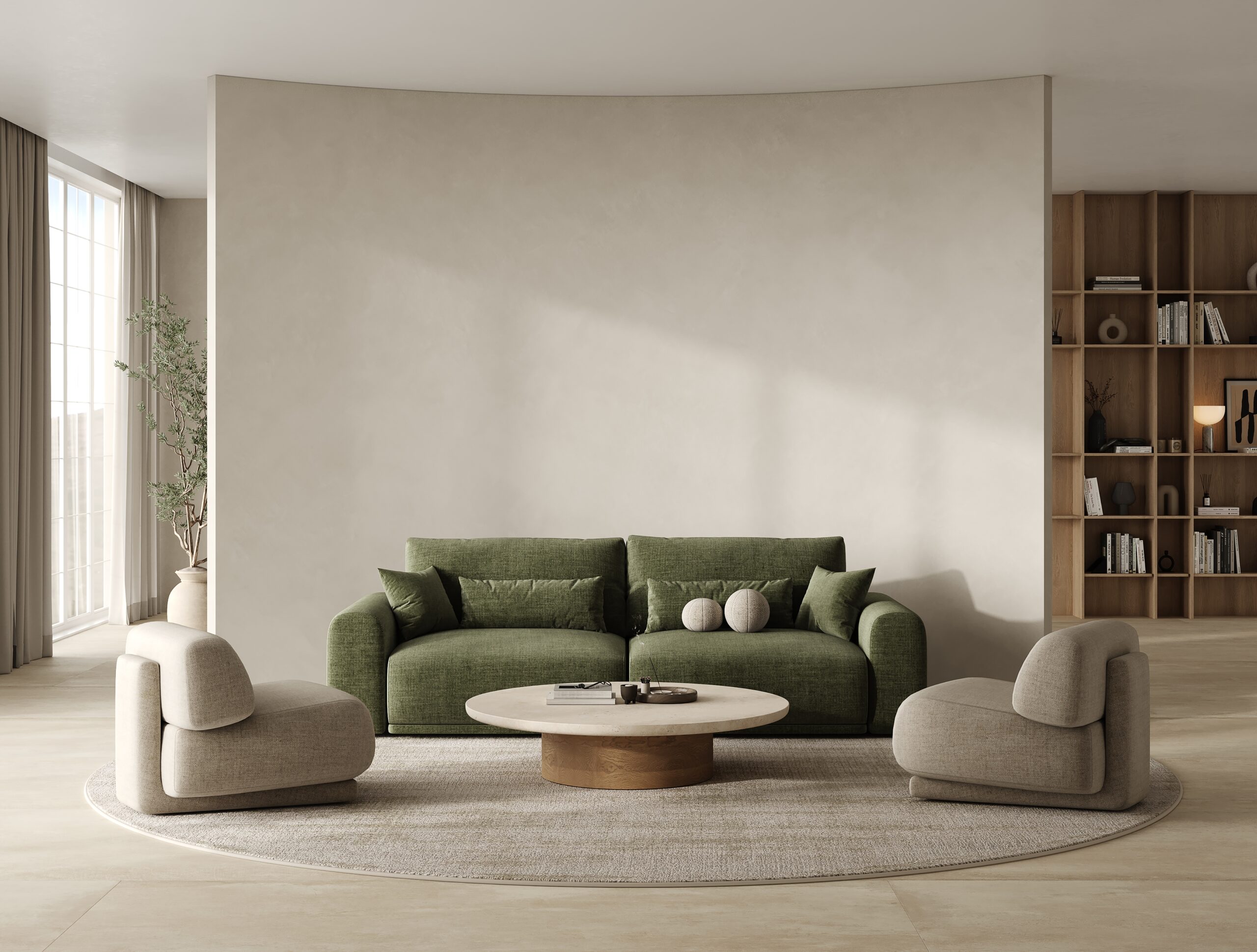Creating a Home That Breathes Simplicity and Comfort
A minimalist home is more than just an aesthetic choice—it’s a way to create a peaceful, clutter-free, and inviting space. With fewer distractions and well-chosen furnishings, a minimalist home fosters calmness, functionality, and warmth. However, minimalism doesn’t mean empty rooms or a sterile environment. Instead, it’s about thoughtful design, high-quality essentials, and personal touches that bring joy.
This guide explores how to design a minimalist home that feels welcoming, practical, and stylish. From decluttering and choosing colour palettes to selecting furniture and incorporating natural elements, we’ll cover everything you need to transform your space into a minimalist haven.
Outline
- Introduction: What Is Minimalist Home Design?
- The Benefits of a Minimalist Home
- Common Myths About Minimalist Interior Design
- Decluttering: The First Step Towards Minimalism
- Choosing the Right Colour Palette
- Essential Furniture and Layout for a Minimalist Home
- Incorporating Natural Elements for Warmth
- Minimalist Décor: How to Keep It Inviting
- How to Maintain a Minimalist Home Over Time
- Conclusion: A Home That Supports Peace and Simplicity
1. Introduction: What Is Minimalist Home Design?
Minimalist home design is a philosophy of simplicity, function, and beauty. It’s about creating a space that feels open, calming, and intentional.
Key Characteristics of Minimalist Home Design:
✔ Decluttered, open spaces with only essential furniture.
✔ Neutral and earthy colour palettes to promote relaxation.
✔ Functional, multi-purpose furniture with clean lines.
✔ Use of natural light to create an airy and spacious feel.
✔ Thoughtful, high-quality pieces over excess decorations.
Minimalism in home design is not about removing personality but about focusing on what truly enhances your space.
2. The Benefits of a Minimalist Home
A minimalist home offers more than just visual appeal—it has practical, psychological, and environmental benefits.
| Benefit | Why It Matters |
|---|---|
| Less Stress & Anxiety | A clutter-free environment promotes mental clarity. |
| More Space & Light | Minimalist design makes rooms feel larger and more open. |
| Easier Maintenance | Fewer items mean less cleaning and organising. |
| Better Functionality | Every piece serves a purpose, eliminating wasted space. |
| Sustainability | Buying less reduces waste and promotes conscious consumption. |
A minimalist home is not just about design—it’s about how the space makes you feel.
3. Common Myths About Minimalist Interior Design
Some people hesitate to embrace minimalism because of misconceptions. Let’s debunk them:
| Myth | Reality |
|---|---|
| Minimalist homes look empty and cold. | When designed well, minimalist homes feel warm, cosy, and inviting. |
| You can’t decorate a minimalist home. | Minimalist décor focuses on quality over quantity, not complete removal. |
| Minimalism means getting rid of everything. | It’s about intentionality, not deprivation—keep what you love and use. |
| Minimalism is expensive. | Investing in fewer, high-quality pieces saves money long-term. |
Minimalism is about balance—not extreme minimalism, but a thoughtful, curated space.
4. Decluttering: The First Step Towards Minimalism
Decluttering is essential to achieving a minimalist home.
How to Declutter Effectively:
✔ Start small – Tackle one area at a time (e.g., a single drawer or shelf).
✔ Use the 90/90 Rule – Have you used it in the last 90 days? Will you use it in the next 90? If not, let it go.
✔ Keep only what adds value – Donate or recycle anything that no longer serves you.
✔ Avoid “just in case” clutter – Be honest about what you truly need.
Decluttering isn’t about throwing everything away—it’s about keeping what matters.
5. Choosing the Right Colour Palette
Colours play a huge role in creating a calming, minimalist space.
Best Colours for a Minimalist Home:
- Neutral tones – White, beige, grey, taupe for a timeless base.
- Earthy shades – Soft greens, warm browns, muted blues for warmth.
- Monochrome palettes – Using different shades of one colour for depth.
Avoid:
- Bright, clashing colours that overwhelm the space.
- Overuse of dark colours, which can make rooms feel smaller.
A simple colour palette creates a cohesive and relaxing atmosphere.
6. Essential Furniture and Layout for a Minimalist Home
Minimalist furniture should be functional, stylish, and clutter-free.
Key Furniture Pieces for a Minimalist Home:
✔ A comfortable, neutral-coloured sofa – The centrepiece of your living space.
✔ A multi-purpose coffee table – With storage options to minimise clutter.
✔ A simple, clean-lined bed frame – Avoid overly ornate designs.
✔ Minimal yet practical storage solutions – Built-in shelves, under-bed storage.
Layout Tips:
✔ Keep furniture away from walls to create flow.
✔ Prioritise space over unnecessary furniture.
✔ Use mirrors to reflect natural light, making the room feel bigger.
Less furniture, more function. Keep only what serves a purpose.
7. Incorporating Natural Elements for Warmth
To prevent a minimalist home from feeling too cold, introduce natural materials.
Ways to Add Warmth:
✔ Wooden furniture – Oak, walnut, bamboo for natural elegance.
✔ Soft textures – Linen curtains, wool rugs, cotton cushions.
✔ Houseplants – Aloe vera, snake plants, pothos for a fresh feel.
✔ Natural lighting – Use sheer curtains to maximise daylight.
Minimalism doesn’t mean sterile—natural elements add warmth and depth.
8. Minimalist Décor: How to Keep It Inviting
Minimalist décor is about simplicity with purpose.
✔ One statement piece per room – A painting, vase, or sculpture.
✔ Functional décor – Stylish lighting, storage baskets.
✔ Limited decorative objects – Choose meaningful over excessive.
Less decoration doesn’t mean less personality—choose meaningful items that enhance your space.
9. How to Maintain a Minimalist Home Over Time
A minimalist home requires ongoing maintenance.
How to Keep It Clutter-Free:
✔ Regularly reassess belongings – Declutter seasonally.
✔ Adopt the “one in, one out” rule – Buy only what replaces something old.
✔ Keep surfaces clear – Avoid piling up unnecessary items.
Minimalism is a habit, not a one-time project.
10. Conclusion: A Home That Supports Peace and Simplicity
A minimalist home is not about having less—it’s about making room for more peace, joy, and functionality.
Key Takeaways:
✔ Decluttering = less stress and more space.
✔ Simple colour palettes create a calming environment.
✔ Minimalist furniture should be functional and stylish.
✔ Natural elements add warmth and comfort.
Challenge: Try decluttering one room and experience the benefits of a minimalist space.
A minimalist home feels inviting, functional, and free from chaos. Are you ready to simplify your space?








